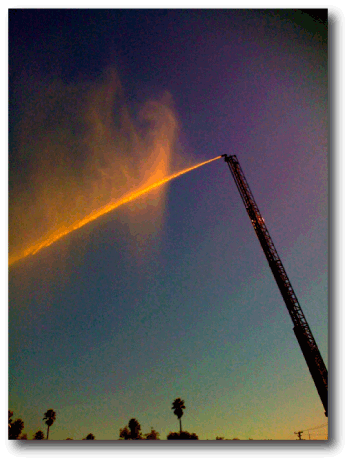I was catching up on astro-ph.EP this morning, and came across Paper #20 from the HARPS Search for Southern Extrasolar Planets. The authors report the detection of two new planets orbiting BD 08-2823, a nearby, moderately active K-dwarf. The inner planet in this new system has a mass comparable to Uranus (Msin(i)=14.4 Earth Masses) and an orbital period of 5.60 days — yet another example from the huge population of super-Earths and sub-Neptunes lying in short-period orbits around the Sun’s closest neighbors. As described in the paper, the two new planets emerged serendipitously from a thwarted attempt to identify transiting planets using the Hipparcos database.
What caught my eye about BD 08-2823b, is the fact that the parent star has not yet been monitored for transits. The a-priori probability that BD 08-2823b can be observed in transit is >7%. The star is observable from both hemispheres, at V=9.86 it’s a natural for small-telescope ground-based observers, and it’s up right now!
A successful detection is no walk in the park: The expected transit depth is of order 1.2 millimag, right at the limit of what’s been demonstrated by skilled small-telescope observers. The possible short-term activity of the parent star will demand multiple confirmations in the event that transits are indeed occurring. The current transit ephemeris is uncertain by more than a day to either side of the predicted transit midpoints (just added to the Transitsearch.org candidates table).
The transit valuation metric (described here) assigns a real-world value to the detection of a given transiting planet. It’s a way of cutting through hype, and it keeps a necessary spotlight on the fact that the cost of detecting a given transiting planet is not necessarily proportional to the scientific value of the planet detected.
If BD 08-2823b transits, its value using the metric works out to ~3 Million dollars. In other words, a detection would amount to a major discovery (something that’s getting increasingly harder to pull off, given this past year’s flood of results). In expectation, factoring in the 7% transit probability, the value is 210K. On a per-night basis, this is well over twice the value of Keck time, and yet it can be had by a good observer with a good backyard telescope. The next opportunities are centered on Jan 1st, and Jan 7th.


Talking of transits, what do you make of the suggestion that TrES-2 is undergoing inclination changes – the radial velocity coverage seems fairly sparse for this planet, but would an additional Jovian-type planet like the one proposed really have been missed?
Pingback: Twitted by LeeBillings
Just outta curiosity, are the RV people looking for smallish short-period planets inboard of the giant around E Eridani, or is it considered to be too noisy?
Greg, your predictions for 2009 from January look really good!
http://oklo.org/2009/01/02/ringing-in-the-new-year/
If one adds the 2 hidden planets on exoplanet.eu, you get exactly 417 planets! :)
exofever: clearly you haven’t found all the hidden planets on exoplanet.eu… :-)
Does HD156668b transit?